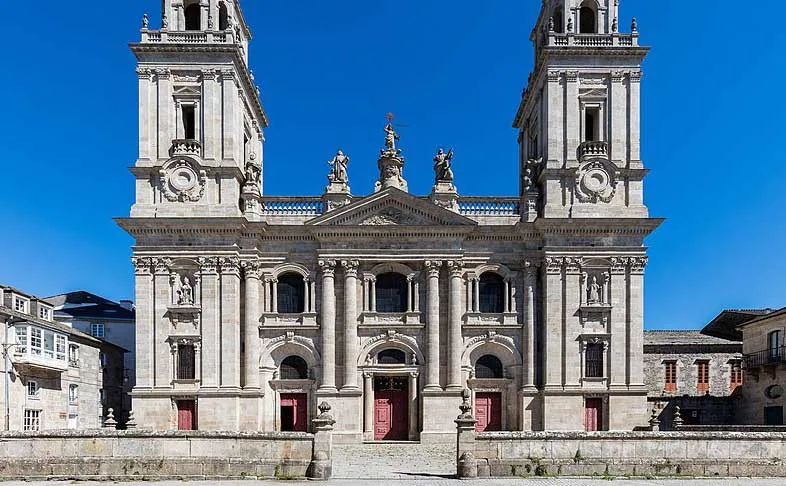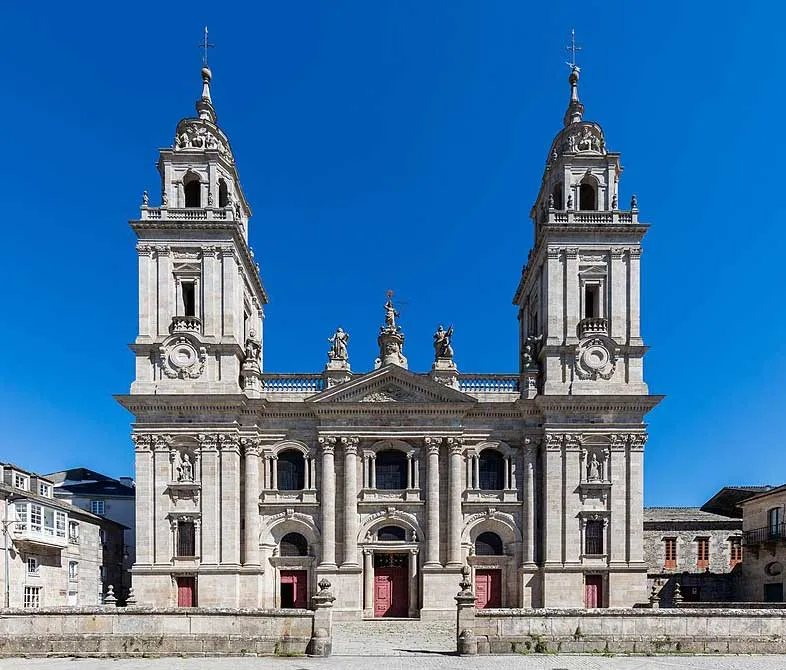
Introduction
Saint Mary’s Cathedral, better known as Lugo Cathedral, is a Roman Catholic church and basilica in Lugo, Galicia, north-western Spain. The cathedral was erected in the early 12th century in a Romanesque style, with Gothic, Baroque and Neoclassicist elements.
A church existed in the site from 755. In 1129 Bishop Peter III commissioned a new edifice in the latest architectural style from Raimundo, a local architect and builder. This Romanesque structure was completed in 1273.
The Chapel of Nuestra Señora de los Ojos Grandes (Our Lady of the Big Eyes) in the Cathedral of Lugo in Galicia, north-west Spain, houses an arresting cycle of applied emblems executed c.1735. Drawn from different printed sources, such as Jan David’s Pancarpium Marianum (1607) and Filippo Picinelli’s Mundus Symbolicus … (1681), most of them are used to emphasize the prerogatives accorded to the Virgin Mary by the Catholic Church.
However, a dozen emblems appear to be addressed to the faithful as they may echo the process of spiritual perfection described by mysticism and popularized in the seventeenth century through two emblem books, Herman Hugo’s Pia Desideria (1624) and Benedictus Van Haeften’s Schola Cordis (1629). This article explores the connections between the Spanish edition of the latter, issued for the first time in 1720 under the title La Escuela del Corazón, and the aforementioned group of twelve non-Marian emblems.
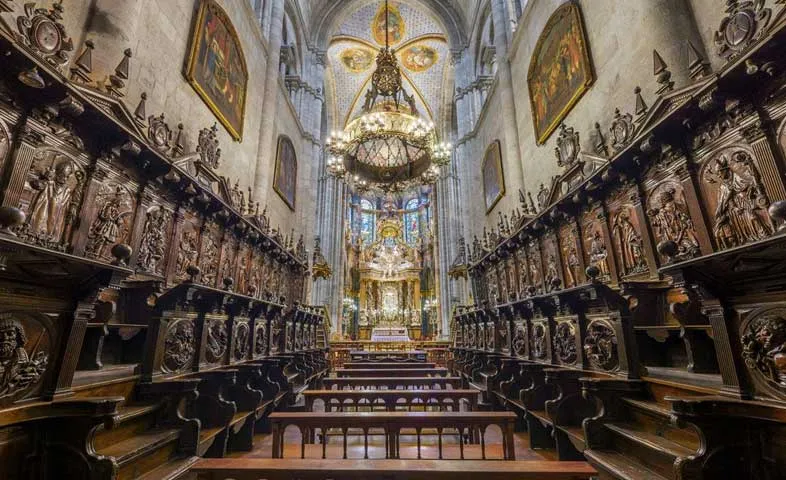
Could these paintings be an embodiment of some of the lessons taught in the Schola Cordis? If so, for what reason might they have been included in a programme devoted to the Mother of God? In answering these questions, this article attests to both the comprehensive relationship established between words and images in the Early Modern period and the important didactic role played by emblematics in the diffusion of post-Tridentine Catholicism.
Later renovations and restorations added elements in other styles, such as the Renaissance retablo at the high altar. It was destroyed in the 1755 Lisbon earthquake and fragments of it are housed in the church. The cathedral received from the Pope the privilege to permanently expose the Holy Sacrament.
The cathedral is another of the city’s architectural treasures. The incredible chapel of the Virgin de los Ojos Grandes, is very Romanesque with valuable Baroque elements. The beautiful Renaissance choir which is the altarpiece by Cornelius of Holland, and an original tympanum in the north door, are some of the temple’s most significant details. The central nave, which is extremely high and has slightly pointed arches, points to a Gothic influence.
History of Lugo Cathedral, Galicia, Spain
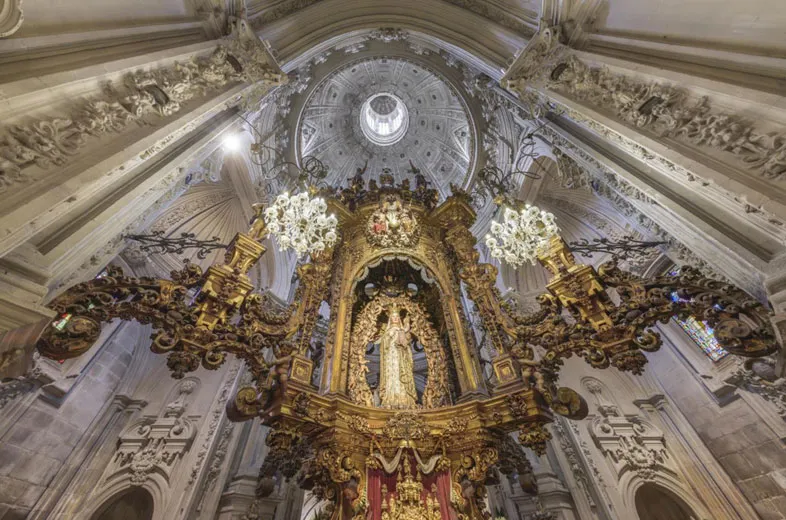
The cathedral has a Latin Cross structure, with a length of 85 m. It has a nave, covered by a barrel vault, and two aisles, with an ambulatory and five apse chapels. The triforium features triple ogival mullioned windows. The apse houses a calvary sculpture from an unknown date.
The façade is a Renaissance design by Julián Sánchez Bort [es] inspired by a plan proposed by Ventura Rodríguez for the Cathedral of Pamplona. Its construction was finished in the late 19th century, with the completion of the two side towers.
The northern entrance’s narthex is in Gothic style, dating to 1510-1530. Internally showing a starred vault, it is formed by three archivolts with a lintel showing Christ Pantocrator and with a pinjante (glove-shaped decorative pendant) that features a depiction of the Last Supper.
To the right of the entrance is the Gothic Torre Vella (bell tower), surmounted by a Renaissance top floor finished by Gaspar de Arce in 1580. The sacristy (1678) and the cloister (1714) are in the Baroque style, as is the central chapel of the triforium (1726). The chapel of St. Froilán is in Renaissance style, dating to the 17th century. Notable is the choir, built by Francisco de Moure (early 17th century).
Architecture of Lugo Cathedral, Galicia, Spain
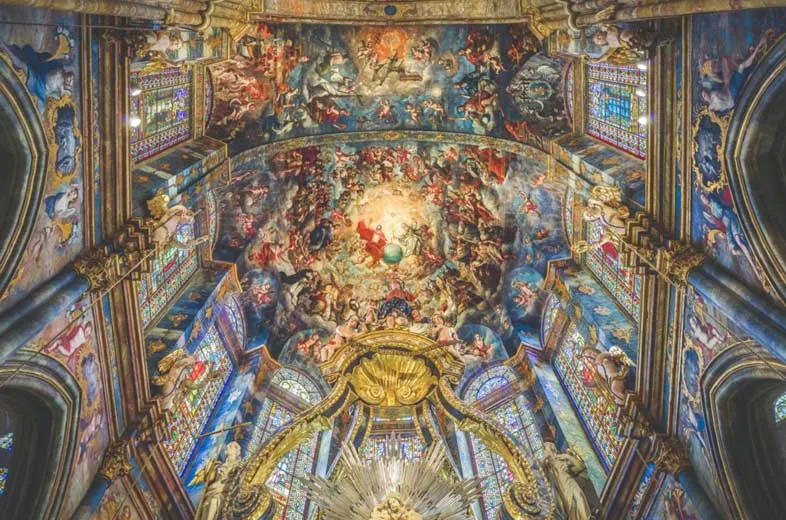
Architectural Styles: Romanesque Architecture, Gothic Architecture, Baroque Architecture, Neoclassical Architecture.
The Cathedral of Lugo – on its walls like a great open book. History that begins in late Roman times, after the foundation of the city by the Romans. With the subsequent evangelization, a temple was built in this same place, around the 1st century. There is no news of what that first church in Lugo could have been, but it is known that in the middle of the 8th century Bishop Odoario restored it.
In the XII, the figure of Raimundo de Monforte as master builder will stand out. Later, in the 14th century, the greatest of the cathedral’s transformations took place, largely caused by the terrible earthquakes that occurred in Portugal in the 18th century.
Internally, the temple has the longest and narrowest plant of the Hispanic cathedral temples. Despite the plurality of periods, its features respond mainly to a late Romanesque style. On the outside, the Romanesque façade of the North Gate stands out. The figure of Christ in Majesty leaning on a beautiful capital in which the Last Supper is represented, is one of the symbols of this cathedral.
The temple, summary and hodgepodge of all architectural periods, allows an unparalleled journey through history and art through stone.
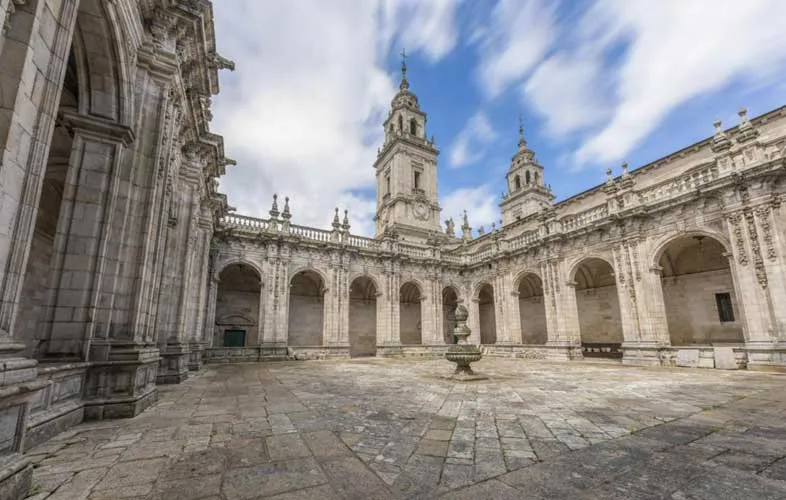
Main Chapel
In the main chapel of the cathedral of Lugo, the Blessed Sacrament is permanently exposed. Since time immemorial, day and night. This motif, represented on the coat of arms of Galicia, makes the cathedral of Lugo a unique example of perpetual adoration of Jesus. It is a unique tradition in the world. For this reason, Lugo is known as Lugo Ciudad del Sacramento. The main chapel is the spiritual heart of the cathedral, where its inhabitants come to pray almost continuously.
Let yourself be surprised by the fantastic paintings of José Terán. Discover the magnificent altarpiece by Corniellis de Holanda, placed at the front of the transept: a fantastic Renaissance work that represents one of the jewels of 16th-century sculpture in Galicia. Admire the beautiful complex formed by the main chapel, the transept and the choir, as well as the Gothic ambulatory. All elements that remind us of the beautiful history of survival, overcoming and transformation of this cathedral.
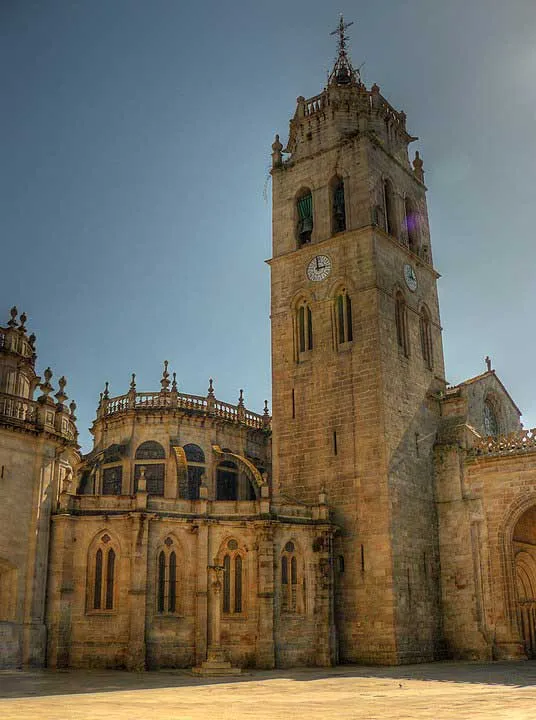
Chorus
The Lugo cathedral is the only Galician cathedral that preserves its choir in situ in the place that was usual in Hispanic churches. It occupies the first three sections of the central nave. The work of the great Galician artist Francisco de Moure, from the beginning of the 17th century, this set carved in walnut represents a true artistic jewel.
The chairs are made up of a series of twenty-seven seats above ground level, and another of thirty-nine on a higher plane. His unique interest focuses on the imagery that develops throughout the whole.
Let yourself be surprised by what is, for many, the best choir of the 17th century in Spain.
Our Lady of Big Eyes
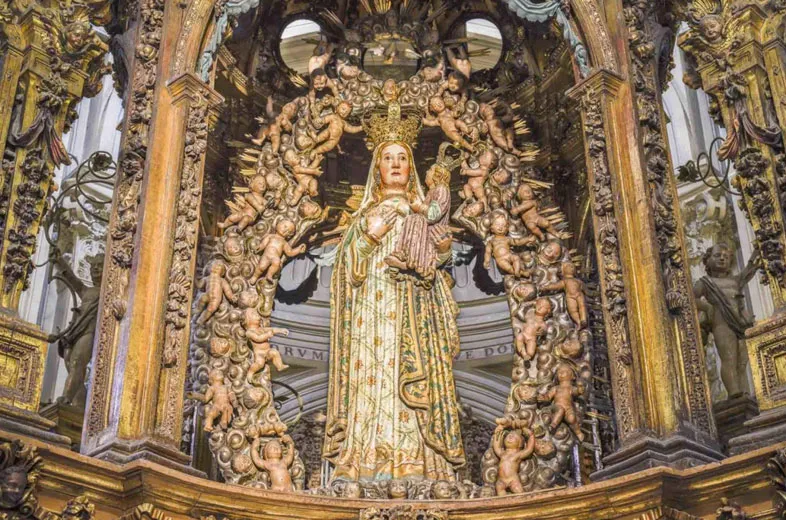
Ambulatory
The ambulatory of the Lugo cathedral is one of the most important works carried out in Galicia in the Gothic period. It represents the greatest transformation of the cathedral together with the new apse, also in the Gothic style. All the chapels that make it up are Gothic, except for the central one. It is essential to appreciate it also from the outside.
Beautiful railings precede the chapels of this ambulatory, among which the chapel of Nuestra Señora de los Ojos Grandes stands out. A very complex creation that combines architecture, sculpture and painting in a unique work of art that seems to merge beyond stone and wood.
It is a baroque work in which the best Galician baroque artists of the time worked: Fernando de Casas, Miguel de Romay and Miguel Ángel Antonio García Bouzas. In the center, the venerated image of Our Lady of the Big Eyes, crowning this complete Marian theology. The image represents the Virgin breastfeeding the Child and owes its name to the expressive greatness of her eyes.
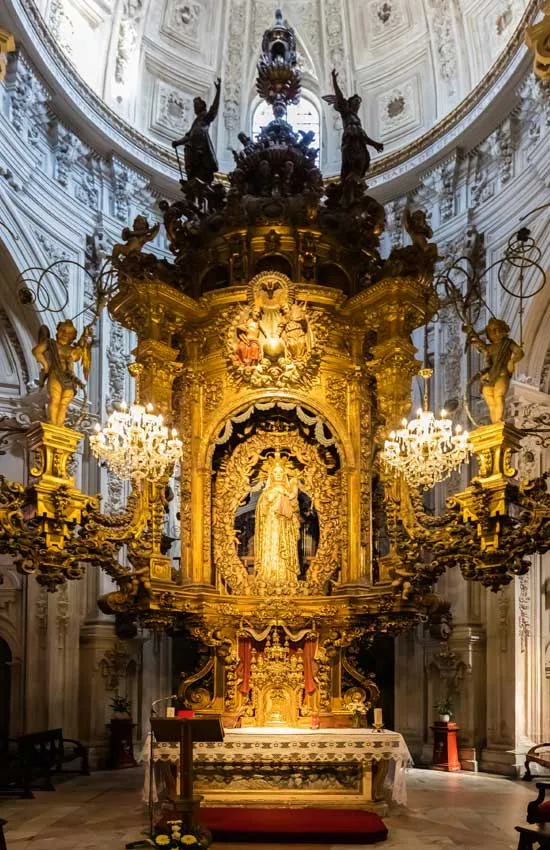
Feast Day - 4th October
The Feast Day of Lugo Cathedral, also known as Santa María Cathedral, in Galicia, Spain, is celebrated on 4th October. This date corresponds to the Feast of Saint Francis of Assisi, who is the patron saint of the cathedral.
Mass Time
Weekdays
Sundays
Church Visiting Time
Contact Info
Plaza Santa Maria, 1,
27001 Lugo, Spain
Phone No.
Tel : +34 982 23 10 38
Accommodations
How to reach the Cathedral
Santiago de Compostela (SCQ) Airport, Galicia, Spain is the nearby airport to the Cathedral.
Lugo Train Station in Lugo, Spain is the nearby Train Station to the Cathedral.

